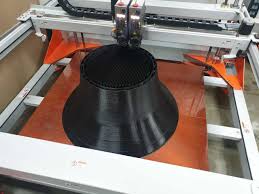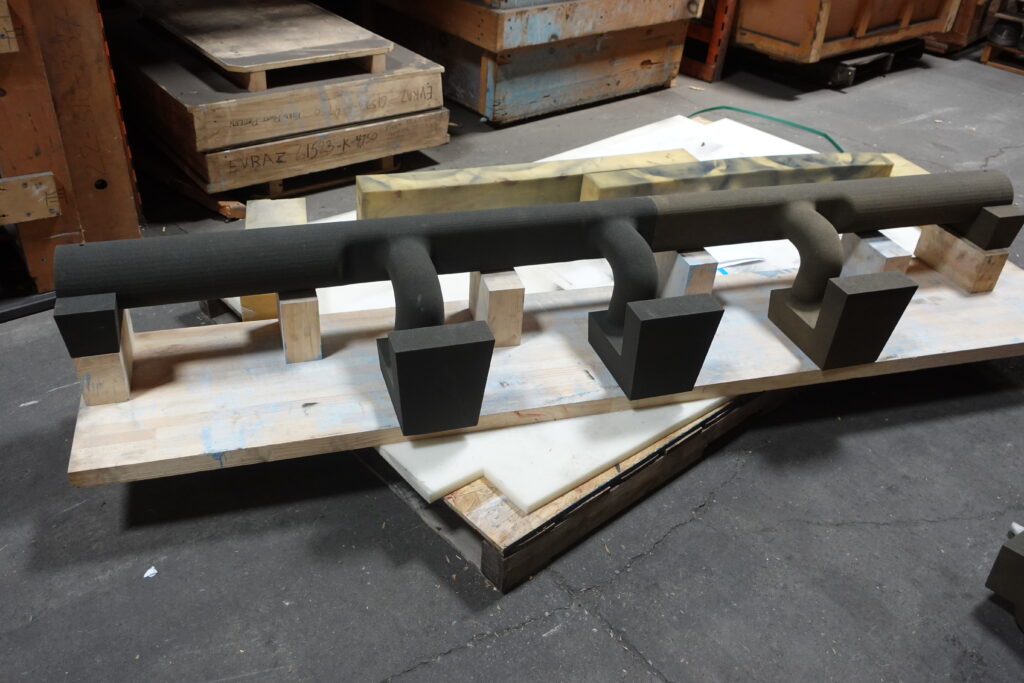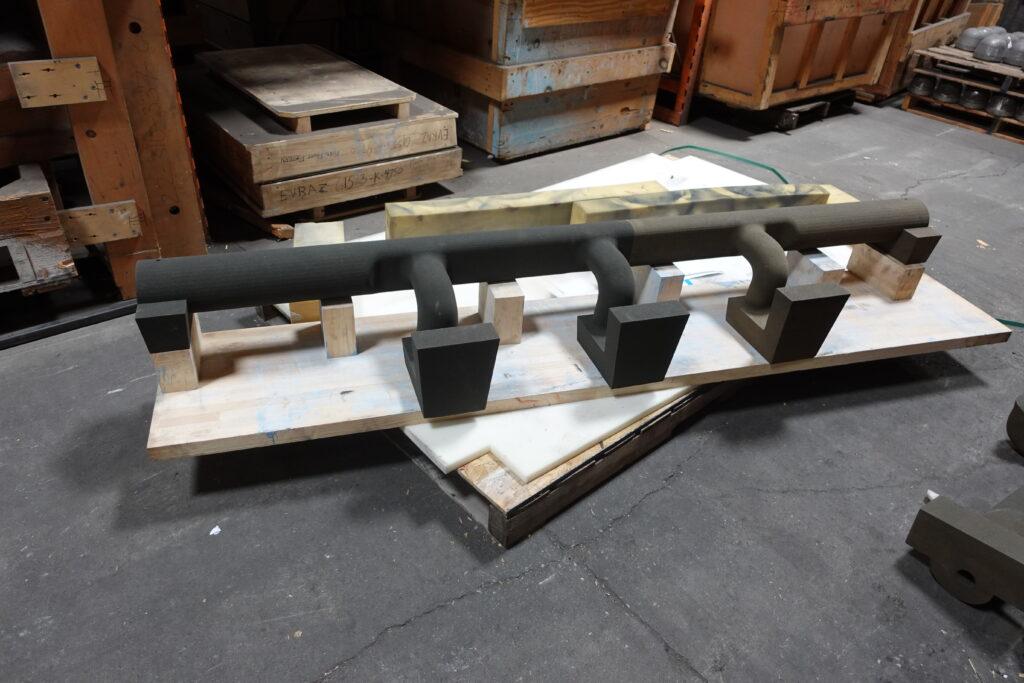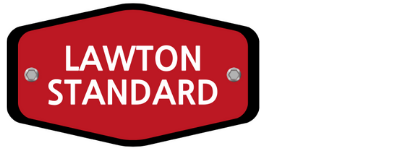
3D printing has come along way over the past few years and Lawton Standard is excited to start using the technology to help create even higher-quality steel and iron castings.
The uses for 3D printing in a foundry can span from making complex cores to making quick replacement parts for certain equipment and tools.
“3D printing technology has rapidly gone from something that was challenging, that was expensive, and turned it into something that really is possible for consumers to use very easily without a lot of cost or capital required,” said Lawton Standard casting engineer Lauren Innis.
Lawton Standard engineers on the benefits of 3D printing
“3D printing can be used in the foundry industry in a lot of different ways,” said Innis. “Probably the most popular is rapid prototype development. If a customer wants to make a change, we can quickly model that, print it out and see if it will fit.”
“It can be very costly to build a pattern and to build core boxes,” said Lawton industrial engineer Nick Knotts. “So if you have a one-off part, printed cores and printed molds are a very excellent option because it means you don’t have to sink a bunch of money into the pattern and a bunch of money into the core boxes.”
Innis agreed with Knotts, saying 3D printing can be used in the foundry to eliminate some tooling costs for smaller run castings. 3D printing also helps with consistency and quality.
“Do you want your assembled cores to be the same dimensions every time?,” asked Innis. “3D printing can give you the same dimensions every time. But if you’re trying to glue it together, fit them together, you’re introducing more variation every time. 3D printing helps eliminate that.”



Higher quality and more precise castings from 3D printing
The bottom line, 3D printed cores and molds can lead to higher quality castings.
A lot of foundries use styrofoam to create patterns for one-off castings. Industrial engineer Nick Knotts says 3D printing will make higher quality castings versus styrofoam. “Printed cores will almost always give you a better finish, so will printed molds,” said Knotts. He continued “On top of that, it’s also nice to make printed cores and printed molds for extremely difficult to make shapes.”
“The big benefits are helping to eliminate lead times,” said Innis. She continued “giving you the opportunity to test things out quickly, to hold tight tolerances that more and more customers are requiring, and it gives you the opportunity to make geometries that haven’t been possible before.”
Another benefit of 3D printed molds and cores, they have a longer shelf life as long as you store them in a cool, dry environment.
3D printing technology in action at Temperform



Right now, they are using 3D printing for the core of one of the castings made at Temperform in Novi, Michigan.
“It’s a two-piece printed core, but if we were to try to make that in a core box it would probably be 7-8 individual pieces of this core assembled together,” said Knotts. “The more core assembly you have, the more risk you have, the more time it takes and that all becomes difficult, and the quality of the 3D printed core is just much better than what we can produce here.”
Knotts said Temperform used an outside, third-party vendor to create the 3D printed core for that casting.
“3D printed plastic models of core assemblies that allows us to tinker with core assemblies before the core is ever made, that way we don’t sink a lot of money, not knowing if the core box or assembly is really going to work,” said Knotts.
Other uses for 3D printers in the foundry industry
Lawton Standard’s facilities at Northern Iron in St. Paul, Minnesota and at RMG in Anniston, Alabama have 3D printers. They aren’t printing cores or molds, but there are other uses for the machines.
“At RMG, they are using 3D printing to create tags on their parts,” said Innis. “So when they have a date tag or a custom tag they need, they can just make a tag really quickly and put it on the pattern. If something breaks or you lose it, you can replace it really quickly.”
Knotts said he sees really big potential applications in models which can play a role in ergonomics, teaching our people how to build certain cores.
“One application I think becomes very interesting is potentially using 3D printed models to train our molders,” said Knotts. “Something I know has been explored by other people in the foundry industry and it’s something we’ve been talking about internally, is being able to 3D print a plastic model of a complex core assembly and being able to see how everything goes together, before you ever make the core box.”

Future of 3D printing at Lawton Standard
“Lawton Standard is continuing to use new technology and I think we’re going to see more 3D printing not only being used both in the complex cores for our customers, but in quick tooling adjustments too,” said Innis.
“I think it would be really cool to be able to have our own 3D printer,” said Knotts. “To be able to 3D print internally, for molds and cores, I think it would be really nice.” Knotts also added that it would be nice to have a little 3D printer too to just make little plastic parts for prototyping and experimentation and training purposes.
Innis added “I think we really participate in these new technologies and have a lot of folks on the engineering team really excited and want to help develop this technology. So, I think we’ll continue to see it throughout our foundries, whether that’s working with industry partners or having our own capital to print our own mold components and maybe even cores in the future. “
She said at the most recent AFS Metalcasting Congress there was a company that was 3D printing ceramic molds. “They were basically creating these small ceramic molds and basically taking a puck of material, mostly low-temperature material like aluminum, and then putting them into essentially a microwave oven. The material would melt, then make a small prototype casting.”
Innis added that this is the kind of way we’re using 3D printing to make castings that you might not think of. “I’m sure there’s going to be more technology that we’re going to see in the next few years.”
Contact Lawton Standard for your casting needs
Lawton Standard strives for continuous improvement and making the highest quality steel and iron castings around.
If you’re interested in holding your castings to the highest standard, the Lawton Standard, reach out to us today for a quote or more information. 920-337-2470.
